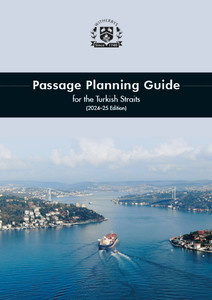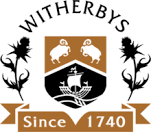
This publication provides passage planning guidance for Masters and navigating officers when transiting the Straits of Malacca and Singapore.
The guidance applies in either direction through the Straits between One Fathom Bank (OFB) and Horsburgh and includes an overview of the navigational references for each leg of the route. It is suitable for all classes of ship.
This new edition has been fully revised to incorporate the latest guidance and practical advice for ships transiting the region, with reference to high vigilance areas, Straits Pilot Services, TSS and VTS information.
This Guide summarises essential passage planning practice, including elements local to the Straits, to help navigating officers compile an effective passage plan. It includes practical guidance for the transit, with reference to manning levels, traffic, tugs, pilotage, anchorages, tidal streams, communications, etc.
Annotated chartlets are provided for each leg of the transit, illustrating aids to navigation and potential hazards to shipping. The chartlets are supported by guidance notes containing further navigational and safety information.
In preparation for this new edition, Witherbys have worked in consultation with Straits Pilots, harbour pilots, port authorities, local navigation superintendents and shipmasters transiting the Straits.
The Guide illustrates areas where high vigilance is required and lists the pre-emptive measures that should be taken by the ship. These areas have been revised and expanded, with input from the pilots who regularly navigate these challenging areas, to include the area around Muda Selatan. Also included are a number of case studies that examine the causes of various groundings and collisions in the Straits.
This
new
edition
now
includes
a
tidal
streams
supplement
booklet
containing
high
quality
diagrams
to
provide
mariners
with
information
about
the
tidal
conditions
they
are
likely
to
encounter
during
their
transits
through
the
Straits.
Key information about the ordering of pilots for Singapore has been updated and presented in an easy to use format. Sections on key depths for ships transiting East and Westbound have been revised into large, pull-out sections to enable the bridge team to gain an enhanced overview of the entire passage.
Information is also taken from appropriate nautical publications and from:
- Rules for Vessels Navigating through the Straits of Malacca and Singapore
- STRAITREP – Mandatory Reporting Procedures
- Port Marine Circulars (Singapore)
- IMO assembly resolutions.
Preface
This publication is for the guidance of Masters and navigating officers transiting the Straits of Malacca and Singapore. The grounding of the Japanese VLCC, ‘Showa Maru’, in January 1975, off Buffalo Rock in the Straits of Singapore, spilling crude oil into the surrounding waters, spurred on the establishment of the traffic separation scheme (TSS) in the Straits of Malacca and Singapore.
Since the first edition of this Guide was published, in 1998, concern among the coastal States, major cargo importers, ship owners and Masters over navigational and environmental safety in the Straits has continued. The Straits remains one of the busiest and most congested seaways in the world.
During the preparation of the first edition of this Guide, and with the goal of improving safety in the Straits, SIGTTO as original authors met with Masters familiar with the area, experienced shore based personnel and knowledgeable personnel from a number of marine organisations. This interest and participation of all continues and is intensified by regional concerns.
During the development of the second edition, it was observed that the discussions regarding problems in the Straits were applicable to all classes of ship. Therefore, it was agreed that SIGTTO would transfer the title to Witherby Publishing Group, who would publish subsequent editions of this Guide for the benefit of all classes of ship, changing the focus from gas carriers.
This 2023–24 Edition incorporates regular feedback received from Straits Pilots since the release of the 2021 Edition.
Preface
Acknowledgements
Notices
List of Abbreviations
Note on Spellings
PART 1 Background and Supporting Notes to the Guide
1.1 Introduction
1.1.1 Explanation of Routes Shown on the Chartlets in this Guide
1.2 Current Status of Singapore Port Development
1.3 Background to the Rules for Navigational Safety in the Straits of Malacca and Singapore (SOMS)
1.3.1 The Cooperative Mechanism for the SOMS
1.4 Under Keel Clearance (UKC)
1.4.1 3.5 m UKC Rule Throughout the SOMS
1.4.2 Background to the 3.5 m UKC Value for the SOMS
1.4.3 Background to the 4.0 m Recommended UKC at Eastern Bank
1.4.4 UKC Requirement for the SOMS and Eastern Bank
1.4.5 Increase of Angle of Heel Due to Rolling
1.4.6 Graph of Predicted Squat for Large Ships
1.5 Key Depths Eastbound and Westbound
1.5.1 Key Depths – Eastbound and Westbound (‘Controlling Depths’ and ‘Spot Depths’)
1.5.2 Key Depths – Eastbound (Chart Overview)
1.5.3 UKC Considerations when Planning a Transit over ‘Eastern Bank’
1.5.4 Westbound Deep Draught Vessels (Key Depths)
1.5.5 Sandwaves
1.5.6 Key Depths – Westbound (Chart Overview)
1.6 Ship Traffic Management Systems in the SOMS
1.7 Passage Planning
1.7.1 Purpose of Passage Planning
1.7.2 Principles of Passage Planning
1.7.3 Error Management
1.7.4 Preparations for Planning
1.7.5 Preparing the Plan
1.7.6 Preparing Paper Charts
1.7.7 Preparing ECDIS
1.7.8 Preparing or Amending Passage Notes
1.7.9 SOMS Pre-Entry Bridge Team Meeting
1.7.10 Video Brief of East and West Passages in the SOMS
1.7.11 Monitoring the Passage Plan
1.7.12 Charts and Nautical Publications
1.8 Practical Guidance for the Transit
1.8.1 Bridge Manning Levels
1.8.2 Engine Room Manning Levels
1.8.3 Speed of VLCCs and Deep Draught Vessels
1.8.4 Use of Engines
1.8.5 Traffic
1.8.6 Fishing Vessels and Tugs Operating in the SOMS
1.8.7 Pilot Boarding Grounds in the Port of Singapore
1.8.8 Voluntary Pilotage Services (VPS) – Straits of Malacca and Singapore
1.8.9 Deep Draught Vessel – Transit Details Broadcast via NAVTEX
1.8.10 Storing in Transit
1.8.11 Detentions of Ships Anchoring OPL in Indonesian and Malaysian Waters
1.8.12 Singapore Anchorages
1.8.13 Bunkers
1.8.14 AIS
1.8.15 VHF Communication and Collision Avoidance
1.8.16 Example Tidal Window Calculation
1.8.17 Currents and Tidal Streams
1.8.18 Batu Berhanti and Tidal Streams in that Area
1.8.19 Advice when Navigating in the Vicinity of Batu Berhanti
1.8.20 Tidal Streams in the Vicinity of Batu Berhanti
1.8.21 Visual Navigational Aids
1.8.22 Weather, Monsoon Seasons and Haze
1.8.23 Pirate Activity and Security
PART 2 Groundings and Collisions in the SOMS – Case Studies
2.1 Grounding and Collision Statistics
2.2 Areas of Highest Potential for Risk of Collision
2.3 Causes of Collisions in the SOMS
2.4 Grounding and Collision Case Studies
2.4.1 Grounding of the ‘Maersk Kendal’ – September 2009
2.4.2 Collision Between the ‘Beks Halil’ and the ‘Thuan My’ – March 2013
2.4.3 Collision Between the ‘MSC Alexandra’ and the ‘Dream II’ – August 2016
2.4.4 Collision Between the ‘Eirini P’ and the ‘Viktor Bakaev’ – January 2017
2.4.5 Grounding of the ‘MV Umm Salal’ 2.45 NM South of One Fathom Bank – April 2017
2.4.6 Collision Between the ‘Chemroad Mega’ and the ‘Sinica Graeca’ – August 2017
2.4.7 Collision Between the ‘Crystal Sunrise’ and the ‘Astro Saturn’ – April 2018
2.4.8 Collision Between the ‘Shun Sheng’ and the Barge ‘Koi 5’ Towed by the Tug ‘Koi 3’ – February 2019
2.4.9 Collision Between the ‘Wilforce’ and the ‘Western Moscow’ – May 2019
2.4.10 Grounding of the ‘Shahraz’ and the ‘Samudra Sakti I’ – May 2020
2.4.11 Collision Between the Container Ship ‘Sinar Solo’ and the Bulk Carrier ‘Taho Australia’ – May 2021
2.4.12 Collision Between the Container Ship ‘Zephyr Lumos’ and the Bulk Carrier ‘Galapagos’ – July 2021
2.5 High Vigilance Areas (HVAs)
2.5.1 Introduction to HVAs in the SOMS
2.6 High Vigilance Areas (HVAs) – Eastbound
2.6.1 Eastbound Crossing Precautionary Area to Western Boarding Ground ‘A’ (PWBGA)
2.6.2 Eastbound Turning in Towards Eastern Boarding Ground ‘A’ (PEBGA)
2.6.3 Eastbound to Eastern Boarding Ground ‘B’ (PEBGB)
2.7 High Vigilance Areas (HVAs) – Westbound
2.7.1 Westbound – Transiting the TSS South of Tanjunj Ayam
2.7.2 Westbound to Eastern Boarding Ground ‘C’ (PEBGC)
2.7.3 Westbound in Vicinity of Eastern Boarding Ground ‘A’ (PEBGA)
2.7.4 Westbound Transit in the Vicinity of Southern Boarding Ground (PSBG)
2.7.5 Westbound Transit in the Vicinity of North Nipa Bn
2.7.6 Westbound – Mudah Selatan
PART 3 Passage Notes
3.1 Eastbound Passage Notes – Malacca Strait and Singapore Straits
3.2 Westbound Passage Notes – Singapore Straits and Malacca Strait
PART 4 Annexes
Annex 1 – Guidance Notes Prior to the Pre-Entry Bridge Team Meeting
Annex 2 – Rules for Vessels Navigating through the Straits of Malacca and Singapore
Annex 3 – Recommendatory Measure for Vessels Crossing the Traffic Separation Scheme (TSS) and
Precautionary Areas in the Singapore Strait During Hours of Darkness
Annex 4 – STRAITREP – Mandatory Reporting Procedures
Annex 5 – Anchorage Locations off Singapore
Annex 6 – Reporting Procedures for Vessels Manoeuvring in Port
Annex 7 – Prohibition of Anchoring in the Straits of Malacca and Singapore
Annex 8 – Singapore LNG Terminal (Jurong Island)
Annex 9 – Revision of Singapore Eastern Pilot Boarding Grounds
Annex 10 – 36 Hour Limit on Anchorage Stays in Singapore (without activity)
Annex 11 – Port Marine Circular 11/2022 – Changes to Pre-arrival Notification
Annex 12 – Importance of Safe Navigation in the Singapore Strait and Singapore Waters
Witherbys
Witherbys titles are developed using scripts developed by technical experts that are peer reviewed within work groups. Typically, they seek to improve understanding of the regulations, recommendations and guidelines issued by Industry.
Witherbys staff have significant expertise in the fields of navigation and hazardous cargoes as well as in the presentation of complex subjects in a graphic and easy to understand manner.
- Number of Pages:
- 247
- ISBN:
- 9781914992827
- Published Date:
- November 2022
- Book Height:
- 305 mm
- Book Width:
- 255 mm
- Weight:
- 1.91 kg
- Author:
Witherby Publishing Group
- Preview:
- Yes
- Publication Date:
- November 2022
 Witherbys.com
Witherbys.com




